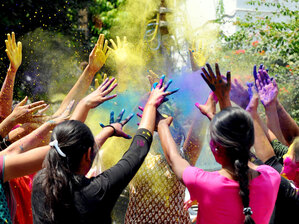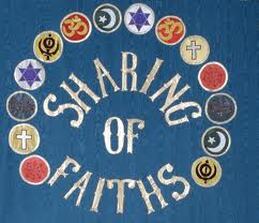
On 21st March the Baha’i community ended their nineteen day fast with the festival of Naw Ruz, which is also the Iranian and Zoroastrian New Year. Taking place, as it does, at the spring equinox it symbolises the new life of spring and is associated with the Most Great Name of God. Sending greetings to the Baha’i community, Bishop Brian McGee, chair of the Bishops’ Committee for Interreligious Dialogue commented that there is a lesson for all of us in this, especially those of us who are believers: “For those of us who are believers the sovereignty of God is a counterpoint to the material and consumerist culture of our times. Coronavirus, climate change and its consequences, conflicts between and within nations are indicative of a world in which humanity has forgotten that life is a gift, that we are all brothers and sisters sharing a common home with a responsibility of caring for creation and one another for the sake of future generations.” Shall we be more aware of this when the present crisis is over?
Another spring festival which lasts over two days is the Hindu festival of Holi. Like all Hindu festivals there are stories attached to them – one is of a demon Holika who was burned on a pyre in place of Prahlahda who insisted on worshipping the God Vishnu. Another is of the Lord Krishna who being worried that Radha would not accept his blue skin was encouraged by his mother to rub any colour he wished on Radha’s face. So the carnival atmosphere during Holi involves the lighting of bonfires to symbolise the overcoming of evil and throw coloured paint and powder over one another. I was in India once during Holi. We danced round the bonfire but I retired well before the others who danced and sang all through the night. The next day we were bombarded with coloured water bombs that seemed to come out of nowhere. This year Holi was celebrated at the beginning of March, before the virus kept people off the streets.
At the same time as the Hindu community were celebrating Holi, the Jewish community were celebrating the carnival festival of Purim. Purim recalls how Queen Esther saved the Jewish community when the wicked Haman had convinced King Ahaseurus of Persia to issue a decree ordering their extermination. The story is told at Purim when the Book of Esther is read through twice in the synagogue. Every time the name Haman is mentioned it’s drowned out with rattles and hooters and boos from the congregation. Children also wear fancy dress and there’s a sense of hope and celebration, a bond of unity within the community and a belief in survival in the face of what in the story seemed a hopeless situation. I’m sure this festival has taken on added significance since the Nazi attempt to exterminate the Jews. It’s a lesson for all of us that life can come out of death, that hope can overcome despair, that communities that stand together can and do survive.
Last year these three festivals fell on the same day. This year Purim and Holi were held earlier in March while Naw Ruz was celebrated on 20th. They’ve a certain amount in common, being Spring festivals. Purim and Holi have a carnival atmosphere and all of them a sense of new beginnings, a sense that light can follow darkness. As the world faces these dark days of isolation and quarantine their message can give us hope and confidence that this too will pass, that a new life is possible, that we will one day be able to celebrate once again with family and friends.



 RSS Feed
RSS Feed
